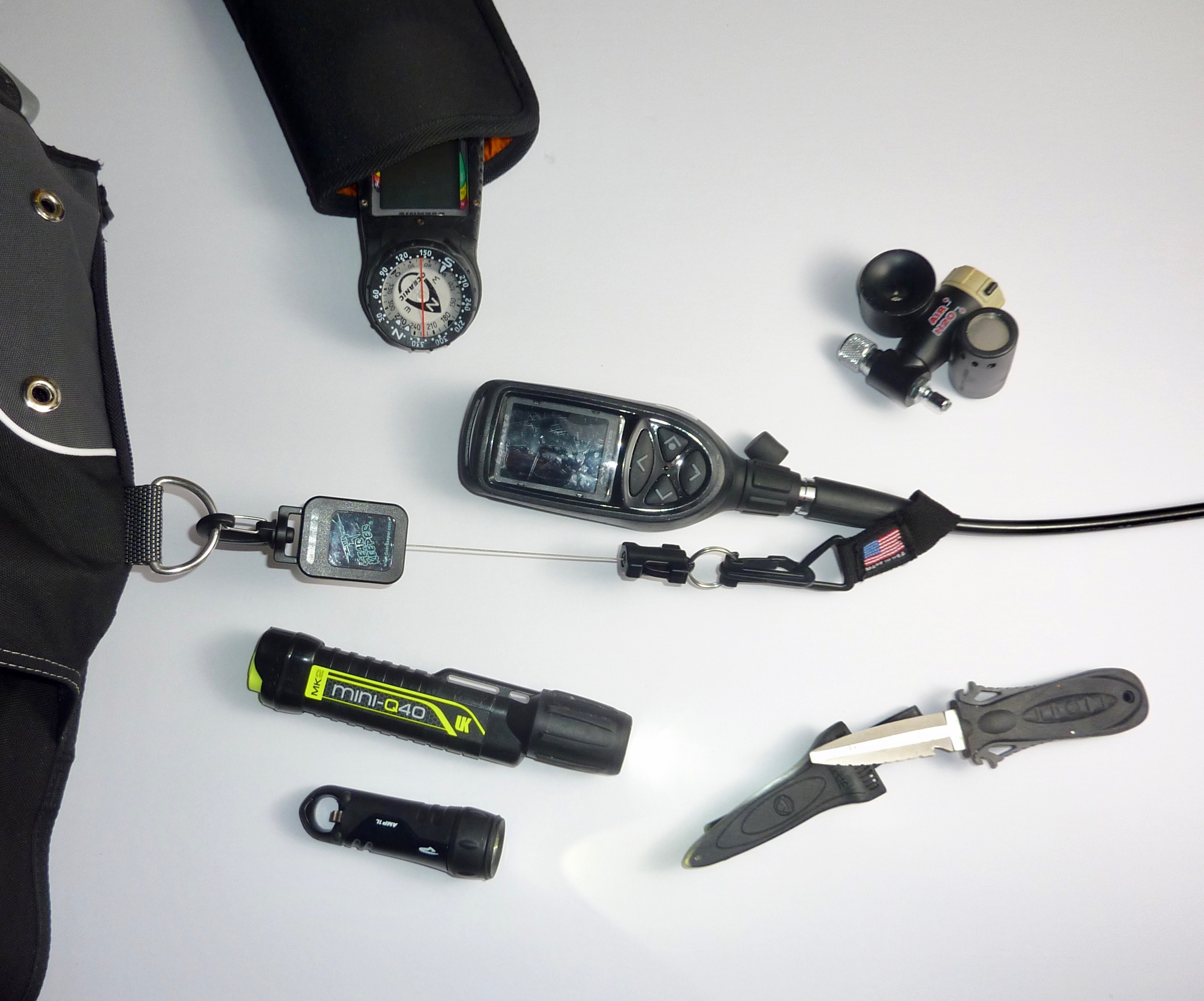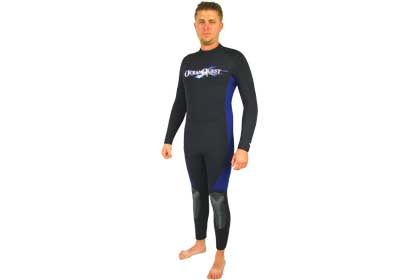One thing is for sure, show up on the dive boat with one of these masks and you will certainly stand out. You’ll field a lot of questions. What is that? I even had a child ask me if it was underwater night vision!
The HydroOptix mask is such a radical departure from the ordinary dive mask it has admittedly made some people skeptical. Can the insect-like bubble-eye mask really improve your underwater vision that much? The answer is an unequivocal yes.
Underwater the HydroOptix mask improves peripheral vision dramatically— not just 50 or 100 percent, but 350 percent, so the makers claim. While this diver has no scientific equipment to test the mask for the accuracy of these statements, I can say that the improvement is stunning.
Perhaps the best way to explain it is with analogies. Diving with the HydroOptix is like stepping outdoors rather than just looking through a window. It is like walking up to one of those huge tanks in Monterey Bay Aquarium or Aquarium of the Pacific—it is all there for you to take in one glance. In fact, the initial dramatically wider view of the mask was disconcerting. There was little or no distortion but the massively wide view was almost dizzying. It felt funny—like I had forgotten to put on my mask underwater but could see perfectly.
So does this come at a cost? Yes, monetarily and, in some cases, an extra pre-dive step. The HydroOptix is a finely machined optical device, as well as a quality piece of dive gear. Expect to pay appropriately.
Depending on your personal vision, the HydroOptix can take an extra step to use. If you are already nearsighted, you may want to skip this paragraph —optically, the mask was taylor made for you. Put the mask on an go diving. Your vision will be perfect underwater.
On the other hand, if you have 20/20 vision, you will have to become “artificially” nearsighted for the mask to provide you with sharp vision underwater. This is accomplished with the use of inexpensive disposable contact lenses. Never having worn any kind of vision correction, let alone contacts, this was going to be a major hurtle with me. I am very sensitive about my eyes. But by the third try I had it down pat, just as 75 million people worldwide that do everyday.
Now that I was artificially nearsighted prior to the dive, how was I to function? First off, I found the blur on the surface not bothersome. If I pulled objects to within a few feet of my face, I could see them clearly. Even so, HydroOptix has available optional inexpensive glasses that restores your vision. For clear surface vision while in the water, but not underwater, they also have available a “Monocle” or a “CoverLens” that clips on the mask. I found neither necessary; I just accepted the blurred distance vision.
When I first tested the mask in clear water, WOW! But I had trouble making the mask fit—not the mask’s fault, but rather my face and moustache (often a problem with a regular mask). The next dive I trimmed back my facial hair and had no problem with leakage. The second dive was in poor visibility—15 to 20 feet. I had anticipated the improvement to be less dramatic. I was wrong. The HydroOptix makes low visibility diving considerably more enjoyable. My third dive was again in good visibility off the Channel Islands. The sun streaming through the kelp took on a whole new wonder.
Acceptance of the HydroOptix by the diving public will be slow—it is a revolutionary piece of dive gear. But if the thought of improving your vision underwater by as much as 350 percent intrigues you, contact HydroOptix for a dealer near you to try one out.
For more information on the HydroOptix, visit their web site at www.HydroOptix.com or call 310-636-1700.










